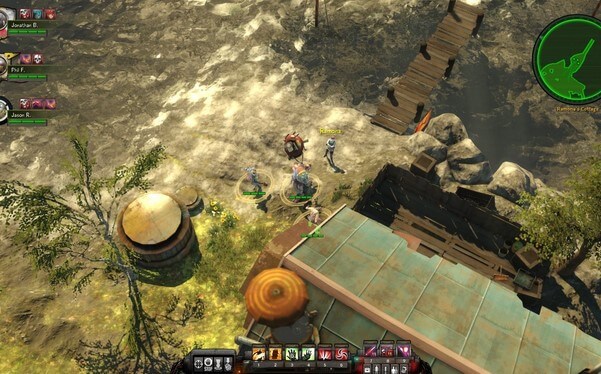
The illustration comes from the neck of the krater.The scene is symmetrical on both sides – the ¾ pose of Achilles is mirrored.The positioning of shields helps give depth and a 3D effect.This is emphasised by the clashing of spears on the opposite side. Figures are set in W shape which mimics the shape of the vase.A singular ground line with a tongue pattern.A comlpex mirrored lotus and palmette chain – contrasts with the earlier black figure examples, and with those of Euphronios.The Francois Vase fills space, groups figures, uses overlapping to create depth = Corinthian minituarist.Achilles’ twisting ¾ pose indicates movement.Memnon holds up his shield to block Achilles’ spear while preparing to strike.Raised feet – indicating movement and battle.Hand gestures – Eos pulls her hair out in anguish, realising her son may die.The heroes’ mothers rushed to Zeus, who weighed their destiny and found Memnon’sthe heaviest. Memnon killed Antilochus so Achilles sought revenge, as with Hector. After the death of Achilles’ ‘cousin’ Patroclus, Achilles closest companion was Nestor’s son Antilochus.Eos the goddess of the dawn (mother of Memnon).Thetis the sea-nymph (mother of Achilles).Achilles and Memnon (Priam’s brother and King of Ethiopia).Interior view of shield highlights Achilles, compared to Hector appearing deliberately weak because of the placement of his shield.Raised feet, legs moving forward, ready to attack.Depicted totally unprotected with his shield twisted around him.Blood is spurting from wounds on his chest and leg.Knees are bent as if stumbling backwards.The arrow is perhaps a hint of the fate that awaits Achilles. Raised feet indicate movement – Apollo is leaving the doomed Hector and waving farewell.Achilles is then killed by Paris, with the help of Apollo, as revenge for the deaths of Hector and Troilus. The heroes are urged on by their respective patrons.

A depiction of a battle in the Trojan War between Greek hero and Trojan prince.She can also be identified by her helmet and spear.She is wearing her snake-covered aegis.These inscriptions are part of narrative technique – naming characters helps the painter to convey what is happening on the vase.The inscriptions on the vase are the names of the figures.The volute krater is the perfect shape because it has a large belly and wide mouth so vessels can be dipped in to it.

Handles of this krater are different to other types of kraters.Used for mixing wine and water at symposium.

This amphora is stylistically very similar to the volute krater so we can assume it is by the same painter. An amphora was found in Berlin, after which this nickname was coined.


 0 kommentar(er)
0 kommentar(er)
